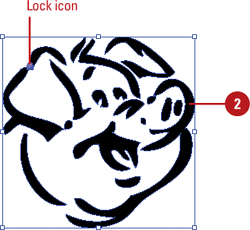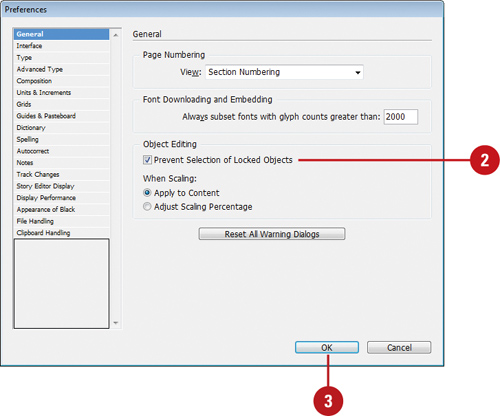After you’ve spent a lot of time laying out objects
in your document, you may want to lock everything into place. The Lock
command on the Object menu allows you to lock the position of one or more
selected objects. When you lock an object, a lock icon appears on the
edge of the object. With the Prevent Selection of Locked Objects option (New!)
in General preferences, you can specify whether a locked object can
still be selected and text or graphics inside the object can still be
modified. However, the position of the object cannot be changed. If you
want to move a locked object, you need to unlock it on the spread first.
Lock or Unlock Objects
- 1. Select the Selection tool on the Tools panel.

- 2. Select one or more objects to lock or locked objects to be unlocked.

- 3. Click the Object menu, and then click Lock or Unlock All On Spread.
When you try to move the object, the cursor changes to a lock icon, and the object doesn’t move.
Set Lock Options
- 1. Click the Edit (Win) or InDesign (Mac) menu, point to Preferences, and then click General.
- 2. Select the Prevent Selection of Locked Objects
check box to prevent locked objects from being changed, or deselect it
to prevent it from being moved (yet you can still select it and modify
text or graphics inside).
- 3. Click OK.

|